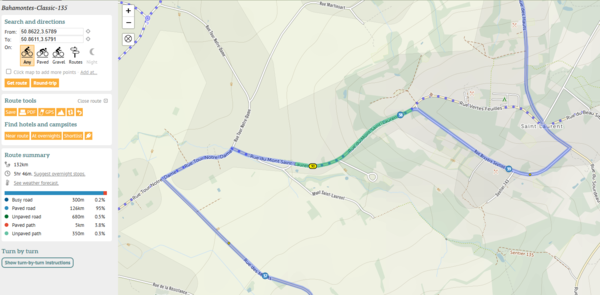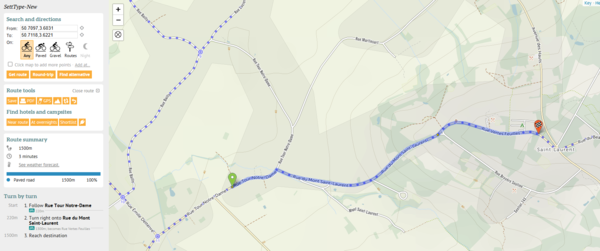Hello,
In Belgium we still have quite some 'cobblestone' roads and they can be incredible frustrating when cycling, especially when you are packed. For people having physical health issues it can even be a no go, or imagine family trips with small children.
Previously these roads were marked in 'green' on the route planner, which was very handy to spot them.
Example from an older route I took around km 90 - near Saint Laurent:

On my last planned ride last weekend, to my surprise I ended up doing a long stretch of cobles (Google streetview link), because I checked the route before and I didn't see any green.
Indeed, when I now plan a test route on the same stretch as in the screenshot above, I don't see any green:

This might be a change at cycle.travel, or maybe somebody (or an algorithm) changed the Openstreetmap source to 'sett', as 'cobblestone' is now discouraged (I think unfortunately), from their Wikipedia page:
"cobblestone is an unclear value, and was widely used for sett and actual cobblestone. Please adopt a more precise value, like sett or unhewn_cobblestone (described above)."
Now the problem with the type 'sett' is that this can mean perfectly straight cut off stones at the top (more recent & popular with cities with money), but also very bad 'Paris Roubaix' like cobblestones!
The two examples shown on the wikipedia page illustrate this:
https://wiki.openstreetmap.org/wiki/File:Pflastersteine_1.jpg
https://wiki.openstreetmap.org/wiki/File:Granite_Setts.jpg
See also:
https://wiki.openstreetmap.org/wiki/Tag:surface%3Dsett
And the linked discussion here:
https://wiki.openstreetmap.org/wiki/Tag:surface%3Dunhewn_cobblestone
Like the Koppenberg very known from the Tour of Flanders, is also labeled as 'sett' and currently not shown in green.
But the surface is horrific (Google streetview for ref)
Same for the famous Paris-Roubaix segment 'troué d'Arenberg' :
I think it's a bad decision from Openstreetmap to put all this under the label 'sett' which actually can mean anything for the surface...
For cycle routing, I thus would prefer that the type 'sett' be labeled in a different color to warn cyclists or that this can even be excluded from routing when 'paved' was chosen or introduce a different category/checkbox.
What do you think?
All the best!
Dominique - long time user - doing > 12 000 road km per year.




Comments
I think a nice gravel road is more ridable then a typical cobblestone road, it's always a disappointment when encountering one on a ride. Would be nice to be able to continue to avoid them.
Ah, this is a bit of a challenge! As you say OSM is really not very good at distinguishing between ‘good’ cobbles and ‘bad‘ ones. Previously cycle.travel did indeed class cobbles as unpaved rather than paved (and hence excluded them from paved-only routing mode) but that led to complaints – I think there are a few threads on this forum about it.
Looking at the Trouée d’Arenberg, I wonder if maybe interpreting the combination of surface=sett, smoothness=bad as ‘unpaved’ might help. That would mean that we could still treat good urban cobbles as paved, but prevent routing over the worst ones in paved mode.
In the medium term I could look at breaking out cobbles into their own separate road/path type (c.t has 22 different categories of road/path, things like ‘unpaved trail’ or ‘trunk road’). It wouldn’t be a silver bullet as we’d still have the OSM good/bad cobbles issue, but it might make things better and would mean I could highlight them in a different colour. I’ll give that some thought.